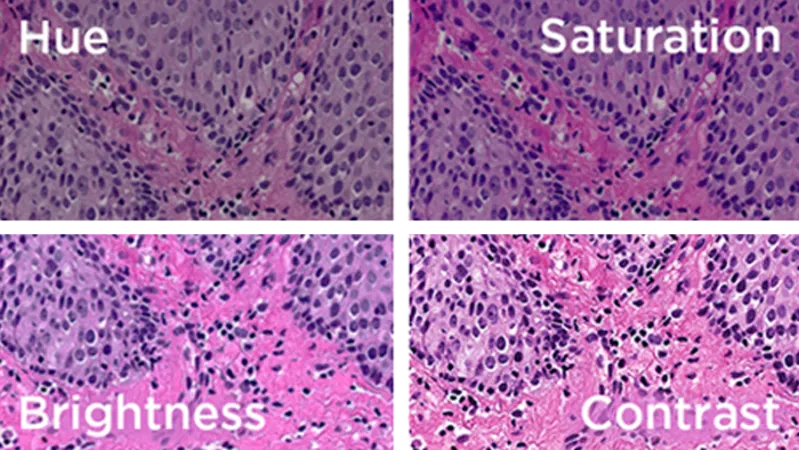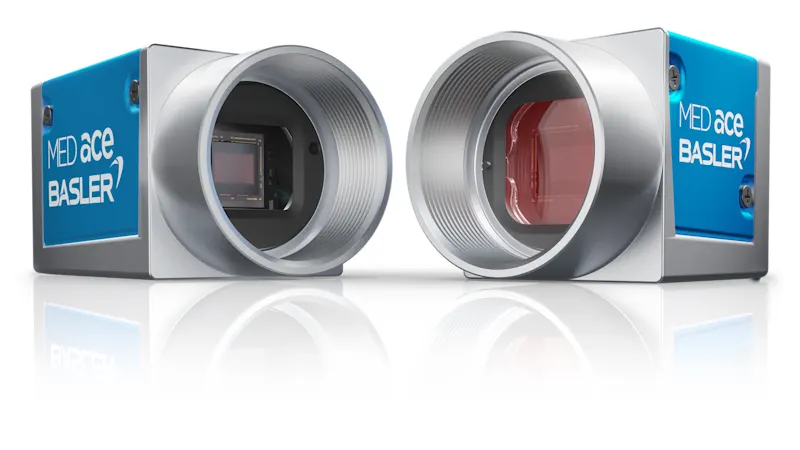Color Calibration for Cameras
Optimized color accuracy for precise image processing
The color information in an image is of great importance for many industrial applications, especially in medicine. For diagnoses, for example in pathology, ophthalmology, or dermatology, doctors need reproducible, standardized color information. Learn how cameras can be calibrated for maximum color fidelity in a matter of seconds without a suitable light source preset.
Étalonnage des couleurs pour les caméras Basler
Dans notre livre blanc, nous expliquons pourquoi l’étalonnage des caméras couleur de Basler est important et quelles sont les étapes à suivre :
Qu’entend-on par couleur et quels sont les systèmes de couleurs ?
Quels sont les avantages de l’espace colorimétrique RVB ?
Quels sont les avantages d’une caméra calibrée ?
Quelles sont les quatre étapes de l’étalonnage des couleurs chez Basler ?
The camera color calibration
In industrial applications such as inline inspection, monochrome images are often sufficient to obtain the desired information. However, in medicine and science, color information is crucial. For correct diagnoses in pathology, ophthalmology, or dermatology, color reproduction must be standardized and reproducible.
Why is calibration important?
During examinations, images are often taken in different rooms, with different lighting conditions and devices, and at different times. To make these images comparable, the color reproduction of the devices must be standardized.
Standardization leads to high accuracy - including high colour fidelity. The process by which color reproduction is standardized is called color calibration. When cameras are calibrated, the colors of the camera images on the monitor match the colors of the object under examination in daylight.
Useful functions for color-accurate image processing
Cameras are the main players in the image acquisition process. Many industrial cameras are equipped with useful functions that facilitate the handling and further processing of color images. These functions can make the decisive difference between different cameras in applications where color accuracy is crucial.

Color presets
Most cameras already offer color presets (so-called light source presets) for standard light sources such as daylight, LED, or artificial light. These are sufficient for simple applications such as security and video surveillance. For more demanding applications such as digital pathology, where color accuracy is critical for analysis, the color settings must be calibrated for the specific facility. Calibration is based on test images under real conditions, meaning under the same lighting conditions as in the intended application.
Standardized color chart
A standardized color chart is often used as a reference for optimizing the color settings. For each color field (on the color chart), the camera supplies a color value that is compared with the target color value supplied with the color chart. The difference between these two values is the color error ∆ E. The aim of camera calibration is to set the camera parameters so that the color error is minimized for all colors.
Application example: calibrating the Basler MED ace camera
With the Basler MED ace camera, color calibration is performed by software. If no suitable light source preset is available, your industrial camera can be calibrated in just a few seconds using the Basler Color Calibrator software .

How color calibration works
The first step is to align the camera with the color card so that the card is fully visible in the image.
The software then adjusts the brightness to the optimum values.
In the next step, the software performs complex calculations such as white balance and color matrix optimization.
Finally, the six-axis operator is set to the best possible color values.
The result is the ideal light source preset for the current lighting conditions. If you are satisfied with the results of the recalibration, the color settings can be saved in the cameraor be exported to other cameras.
Conclusion: calibrated color accuracy for precise medical imaging
Trust and accuracy are crucial in medical imaging. Doctors and healthcare professionals rely on high-quality, color-accurate images for examinations, diagnoses, and aftercare. By using calibrated imaging devices, they can ensure consistent color reproduction and standardized colors for accurate results. This consistency applies both over time and regardless of the imaging device and lighting conditions.
Intelligent and user-friendly cameras enable fast and accurate color calibration in seconds. These advanced solutions will further improve the reliability and efficiency of Medical & Life Sciences applications.
Nos produits pour le traitement d’images en médecine
Profitez de la série spécialement conçue de caméras Basler MED ace et de notre expérience dans le développement d’une solution de vision industrielle individuelle adaptée à vos besoins.
